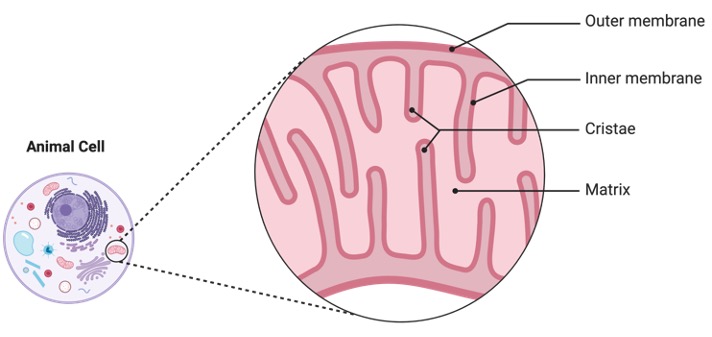Mitochondrion Definition
The mitochondrion is a cellular organelle present in eukaryotic cells. It consists of a spherical or rod-shaped structure and has its own genome. The major function of mitochondrion is the production of adenosine triphosphate (ATP) through the process of cellular respiration.
What is Mitochondrion?
The mitochondrion is mainly involved with the supply of energy and production of adenosine triphosphate (ATP) through cellular respiration, therefore is also regarded as the powerhouse of eukaryotic cells. The mitochondrion is a double-membrane bounded structure that consists of an inner membrane and an outer membrane. The space between these two membranes is called intermembrane space.

It also consists of the cristae and the matrix. The channels are formed by porins present in the outer membrane that helps certain molecules to diffuse freely in the membrane. On the other hand, the inner membrane is highly impermeable and does not contain porins.
Special membrane transporters are required by several ions and membranes to exit or enter the matrix. The surface area is increased by the foldings of cristae that increase ATP production. Some enzymes, mitoribosomes, tRNA, and DNA are present in the mitochondrial matrix. The mitochondrial DNA is genetically distinct from that in the nucleus.
Mitochondria can manufacture its own RNAs and proteins using its genetic material. Therefore it is also termed as a semi-autonomous, and self-replicating structure. The mitochondrial DNA does not recombine during reproduction and is present in only one copy, therefore it is also used to track genetic histories.
During cellular respiration, the energy is produced through oxidative phosphorylation of organic molecules. It uses glucose and oxygen and release carbon dioxide and water to produce energy. Thus, the number of mitochondria is generally high in high energy-requiring cells such as muscle cells whereas several cells such as mature RBCs lack mitochondrion.
The endosymbiotic theory describes the origin of mitochondria. According to this theory, the mitochondrion might have originated from early bacteria. These bacteria become symbiotic with their host and become indispensable energy-yielding structures within the eukaryotic cells.
Some eukaryotes such as Monocercomonoides lacks mitochondrion and obtain energy by the metabolism of nutrients absorbed from the environment. Word origin: mitos means, thread and condrion mean little granule.







